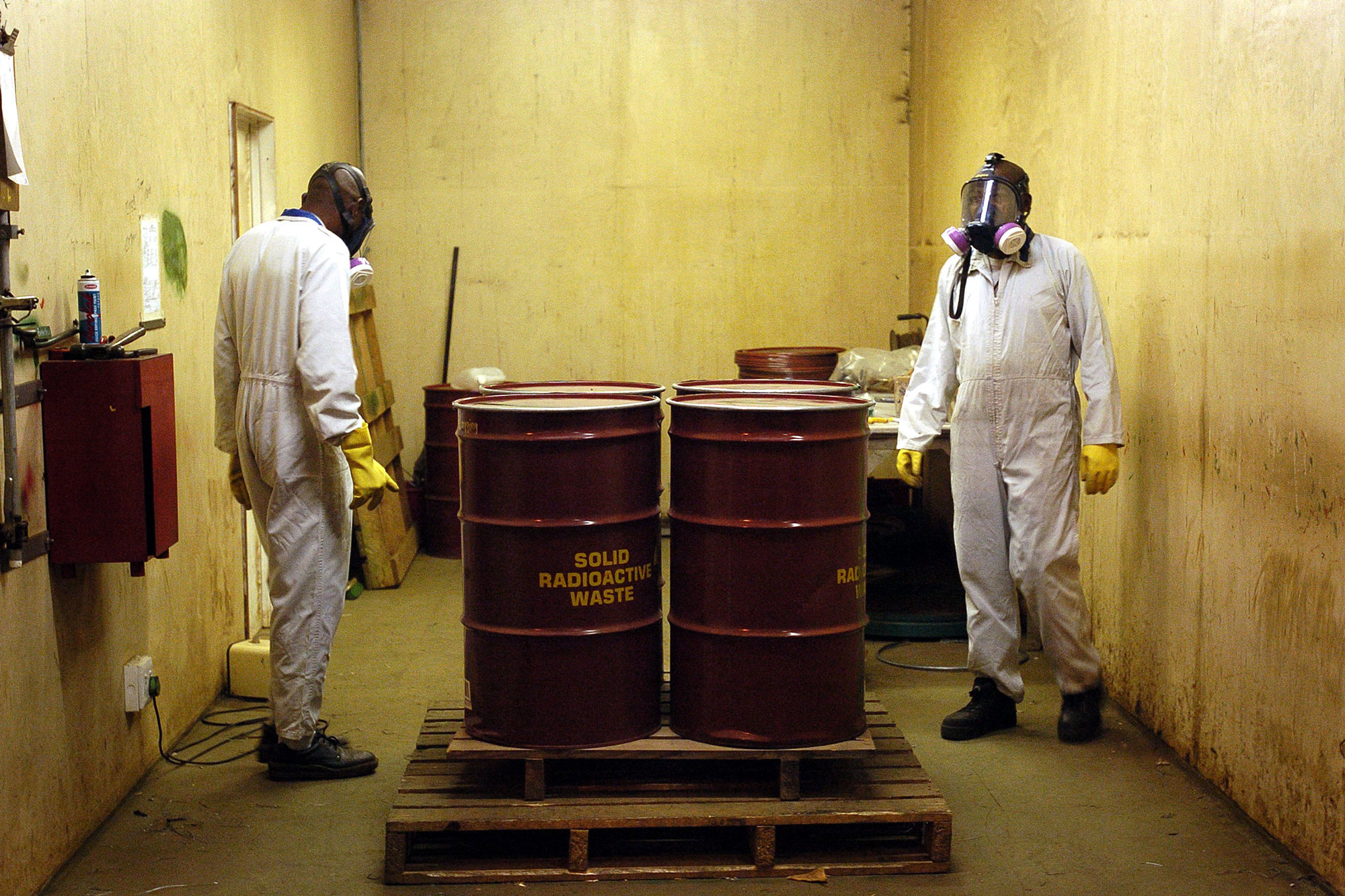Part one | The slow violence of SA’s nuclear waste
Part one of this four-part story considers the imminent danger involved in storing used radioactive materials, a dilemma growing at a rate of more than 32 tonnes a year.
Author:
8 March 2021

Where will South Africa permanently and safely store the radioactive nuclear waste produced by the Koeberg nuclear power station in Cape Town? This critical question remains worryingly unanswered, despite the government’s intention to create even more high-level waste by extending the life of Koeberg 20 years past its original decommissioning date, and by building an additional 2 500MW of new nuclear power in South Africa.
The South African story of what to do with this high-level waste is one characterised by endless broken promises, gross mismanagement, ineptitude and pie-in-the-sky “solutions”. This catalogue of failures means there is now so much high-level waste stored at Koeberg that Eskom is having to build a transient interim storage facility (TISF) at the site, just 25km from Cape Town. That this site is both “transient” and “interim” perfectly illustrates that Eskom, or any other operator of nuclear power plants for that matter, has no long-term answer to the question of what to do with high-level nuclear waste.
Three categories of radioactive waste are produced by nuclear power stations – low-level waste, intermediate-level waste and high-level waste.
Related article:
Low-level waste is made up of contaminated items such as clothing or tools, whereas intermediate-level waste is made up of items such as resins and filters. Both low- and intermediate-level waste exhibit relatively low levels of radioactivity and most of this waste (aside from some intermediate-level items) will become “safe” within 50 years.
This contrasts sharply with high-level waste, which is predominantly made up of spent fuel rods from the reactor which contain radioactive elements that remain lethal for anything from 300 years (cesium-137, strontium-90) to hundreds of thousands of years (plutonium-239).
High-level waste accounts for 95% of all radioactivity in waste produced by a nuclear power station. Spent fuel rods are so dangerously radioactive and thermally active that they must be cooled in “cooling ponds”, or what Eskom refers to as “fuel pools”, for five years before reprocessing or 10 years before storage can be considered.
According to Eskom, Koeberg generates approximately 500 drums of low-level waste, 150 drums of intermediate-level waste and 32 tonnes of high-level waste per year.
The problem of storage
At present, both low- and intermediate-level waste are transported from Koeberg to a waste disposal site at Vaalputs in the Northern Cape, approximately 100km south-east of Springbok. Steel drums containing low-level waste and concrete containers housing intermediate-level waste (within which the waste is solidified) are periodically transported by road from Koeberg to Vaalputs. Once at Vaalputs, this waste is buried in shallow 8m-deep trenches.
The site was opened, without any consultation, in 1986 by the apartheid government, which made sure it was located as far away as possible from where white people lived. It was not until 2003 that the National Nuclear Regulator (NNR) began to liaise with people living near the facility.
Real concerns exist about localised contamination from the Vaalputs site. The site has twice had its operating licence suspended by the NNR. In 1997, drums were found to have been leaking for several years, while radioactive dose limits were exceeded in 2012. The dangers posed by low- and intermediate-level waste are relatively small compared to the extreme dangers posed by high-level waste.
Related article:
Eskom had initially hoped the high-level waste at Koeberg would be reprocessed, either overseas or in South Africa. This is a process by which fission products are chemically separated out of used fuel rods to extract any unused uranium. This alleged solution to the problem of high-level waste has been one of the illusionary solutions Eskom has regularly mooted and just as regularly abandoned because of the colossal costs and serious dangers involved in reprocessing.
In the United Kingdom, the Thermal Oxide Reprocessing Plant, opened at huge cost in 1994, closed in 2018 having reached none of its intended reprocessing targets. Its decommissioning is now set to cost taxpayers at least $5.5 billion and take up to 100 years to complete. In Japan, construction of the Rokkasho Reprocessing Plant began in 1993 and was supposed to be completed by 1997. Incredibly, the plant is still not complete – its completion date has been postponed 25 times – and it is now expected to be operational in 2023, 26 years late and tens of billions of dollars over budget.
Even when operational, large quantities of dangerously radioactive waste, which needs to be stored for thousands of years, remains. Some of this waste is separated plutonium, a fissile material used in nuclear bombs, which presents a very serious security risk. This is precisely why reprocessing has never been authorised in the United States. As the Union of Concerned Scientists conclude, reprocessing is “dangerous, dirty and expensive”. Quite clearly, reprocessing is not an option South Africa should consider.
Related article:
In the absence of reprocessing, the fuel pools at Koeberg, initially designed to allow the fuel to cool for approximately five years before being sent for reprocessing, have become the de facto storage space for all used fuel. Because of this, Eskom was forced to increase storage capacity in the pools (by reracking the fuel rods) in the late 1980s.
Despite this reracking, Eskom informed the ANC in 1994 that a dry-cask storage facility for Koeberg’s high-level waste should be built within four years. Cask storage involves moving fuel rods that have been sufficiently cooled in fuel pools into dry casks made from concrete and steel. These casks, which cost approximately $3 million each, are then stored either on a reinforced concrete pad or in a specially designed storage building. According to Eskom, waste can be stored in these casks for at least 40 years, but potentially up to 100 years. In the United States, the casks are licenced for a maximum of 60 years.
In 1994, while the ANC acknowledged the high-level waste problem needed to be addressed, it chose to ignore Eskom’s recommendation that a dry-cask storage facility be built as soon as possible. By 1996, Eskom was forced to further rerack high-level waste in Koeberg’s cooling pools.
In part two, we look at how funding allocated to manage nuclear waste has been mismanaged.
Read more:
In part three, we look at the safety issues associated with keeping waste at nuclear facilities and best practises related to separating the entity that produces the waste from the one disposing of it.





